Dartmouth At War
the second world war
Dartmouth’s importance during the 1939-45 war mostly centres on D-Day preparations and covert cross-channel activities. There are two WW2 displays in the museum: one is the embroidered panels collection in the Landing corridor leading to the Henley Study and the other is in the Dartmouth at War alcove in the Holdsworth Room, made up to represent a war-time shelter with a screen showing a film of the evacuation of the area for live fire training prior to D-Day and the disastrous unprotected Exercise Tiger intercepted by German E-boats. The drawers contain evocative mementoes of the War, including mini-booklets sent by Hitler to every serviceman in the various theatres and, nearer to home, some GI nylons. Noted also is the diorama of D-Day preparation. Early on 5 June 1944 there were 485 invasion vessels in the Dart; by the next day there were none.
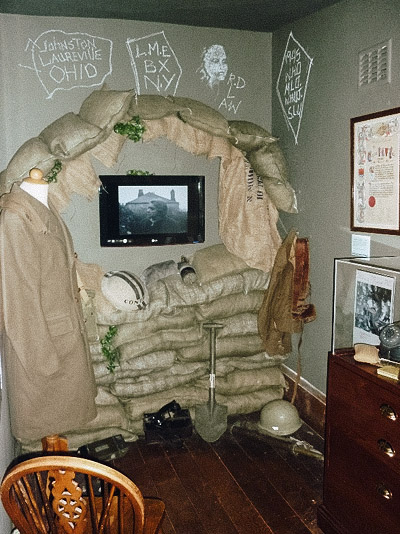
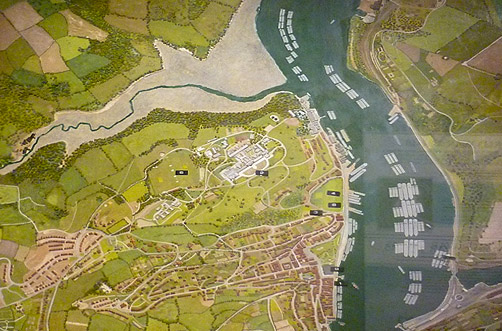
A landscape model of Dartmouth and the lower reaches of the Dart just before D-day. The depiction of the 1940s town and its surroundings generates as much interest among local historians as does the number and type of vessels for military historians.
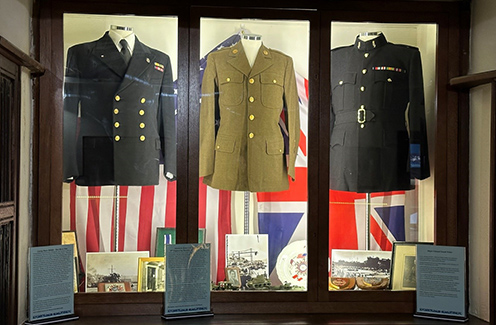
A new display to commemorate D-Day 80 describes the wartime service of three men with Dartmouth connections.
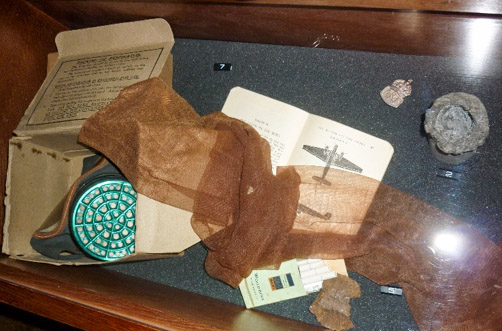
A gas mask, shrapnel and GI nylons.
the great war
As with other towns throughout the kingdom, fathers, sons and brothers went away to war from Dartmouth and many did not come back. Their names are on the war memorial in the Royal Avenue gardens. One who did come back, against tremendous odds, was Private Theodore Veale VC, who valiantly rescued a wounded officer from no-mans-land during the Battle of the Somme. The details of his exploit, described here in an extraordinarily lucid letter to his mother, almost defy belief. He went out under fire to within ten yards of the German lines no less than six times in attending and rescuing the officer. The citation states that ‘the courage and determination displayed was of the highest order’. He died at the age of 87.
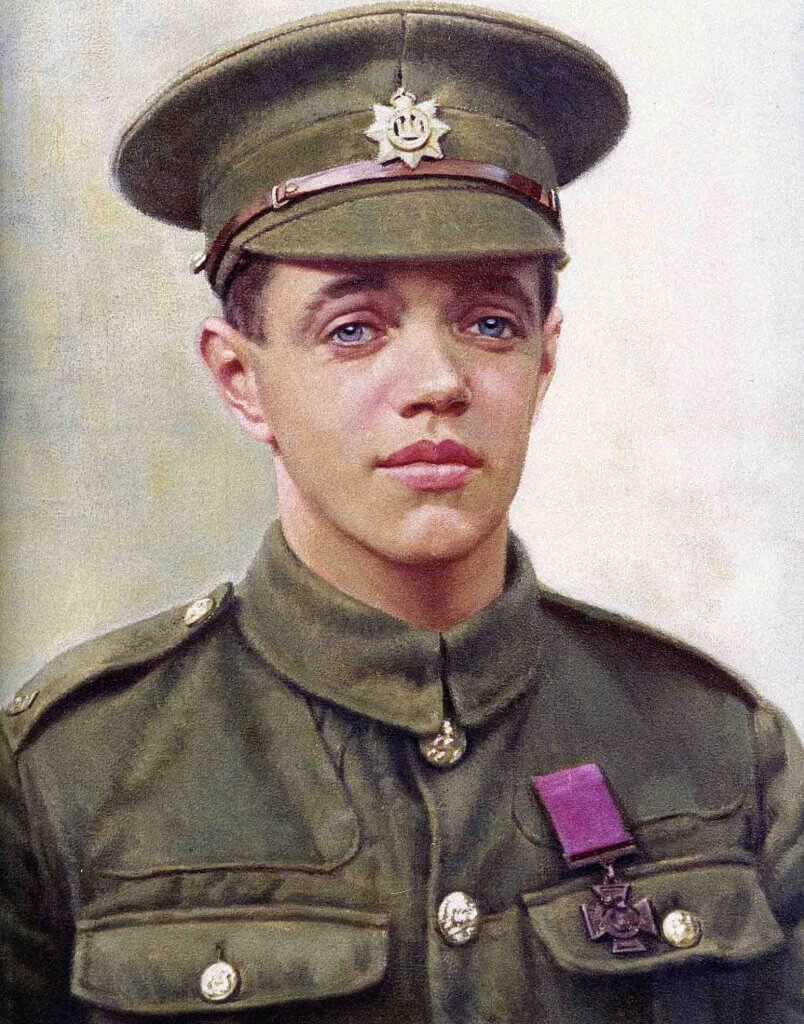
Private Theodore Veale VC
Theodore William Henry Veale was born a few yards away from the Museum in Clarence Street in 1893.
Serving in the Devonshire Regiment, Private Veale was awarded the Victoria Cross for Most Conspicuous Gallantry on 20 July 1916 during the Battle of the Somme.
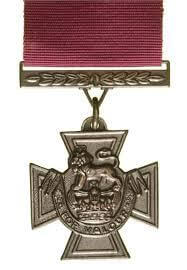
He wrote about the action in a letter to his mother:
“I hope you are all keeping well at home as it leaves me at present. Well I done a bit of rescuing work while under heavy shell and rifle fire while we were up last time. It appears we were in trenches and Corp. of Company said someone in front was waving his hand to come in, he said it was a German wanting to give himself up. Anyhow we waited and he didn’t come so later about twenty minutes I heard someone cry “help, help” and I said give me a rifle and a bomb and out I went. I had not gone about 50 yds which was all in the open when several shots rushed by me. I flopped down on the ground and got up again and ran on, until I found spot where I had seen man waving and to my surprise it was one of our own wounded Officers, so I laid down and done all I could for him, and I was fired at while there. He being so close to the Germans I pulled him back about 15 yds because to my surprise I was about 10 yds from Germans and thinking they were going to pull him in I done that. Well I came back to get him water, took it out to him and they fired at me again. Surprising how I was not hit. But I meant to save him at all costs. So off I crawled back again because it was all open and I got two more men and a Corpl to come out, and with a waterproof sheet I put him on I started to pull him back and got about 20yds and had a rest and you know how ones back aches after stooping. Well the Crpl stood up on his knees and I saw five Germans popup out of the grass about 100yds away there, because my getting him back so far and the distance we got him back together made it easier for them because we had to come over a bit of a bridge and they shot Corpl right though the head and that made the other two nervous and they wanted to get back, so I said “go back, I’ll manage” so they left and I pulled him in a hole and I asked him if he would stay until a little dark, so left him comfortable and went back. Then I sent my team and myself to fire and cover any of them that may try and fire at him. And I walked out to him with water in the afternoon. Then evening came and I lead the way for our Chaplain who was also acting stretcher bearer, Lieu Duff, Sergt Smith and myself and took them out and reached him and was about to carry him in, mind it was not dark and we spotted Germans creeping up. Mr Duff fired around and kept his eye on them with revolver and I not thinking stood up and ran like hell about 150 yds to trench for my gun. I raced out again and covered him and others while they raced in, then me and Mr Duff had to get in which we did safely. After going in and out all day I was never touched. Don’t you think I am lucky and did well … This is a few quick lines in a hurry. It is fine weather here now.”
dartmouth at war dvd
This US Navy film taken in South Devon shows US soldiers training for the D-Day landings, under live fire as they sprint up Blackpool beach, chosen for its resemblance to Utah beach. Later they train on handling landing craft on the river Dart, load vehicles and finally are shown marching through the town of Dartmouth to board their landing craft, ready to set off for the Normandy beaches on the 6th June 1944.
This DVD is unique and exclusive to Dartmouth Museum, Copies are available for sale in the Museum shop.

